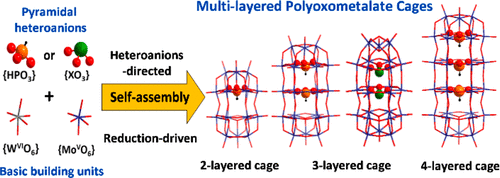論文がアクセプトされました(綱島先生)
Anisotropic Polyoxometalate Cages Assembled via Layers of Heteroanion Templates
Q. Zheng, M. Kupper, W. Xuan, H. Oki, R. Tsunashima, D.-L. Long, L. Cronin
J. Am. Chem. Soc., 2019, 141, 13479–13486.
DOI : 10.1021/jacs.9b04533
Abstract: The synthesis of anisotropic redox-active polyoxometalates (POMs) that
can switch between multiple states is critical for understanding the mechanism
of assembly of structures with a high aspect ratio, as well as for their
application in electronic devices. However, a synthetic methodology for
the controlled growth of such clusters is lacking. Here we describe a strategy,
using the heteroanion-directed assembly, to produce a family of 10 multi-layered,
anisotropic POM cages templated by redox-active pyramidal heteroanions
with the composition [W16Mo2O54(XO3)]n−, [W21Mo3O75/76(XO3)2]m−, and [W26Mo4O93(XO3)3]o−
for the double, triple, and quadruple layered clusters, respectively. It
was found that the introduction of reduced molybdate is essential for self-assembly
and results in mixed-metal (W/Mo) and mixed-valence (WVI/MoV) POM cages,
as confirmed by an array of analytical techniques. To probe the archetype
in detail, a tetrabutyl ammonium (TBA) salt derivative of a fully oxidized
two-layered cage is produced as a model structure to confirm that all the
cages are a statistical mixture of isostructures with variable ratios of
W/Mo. Finally, it was found that multilayered POM cages exhibit dipolar
relaxations due to the presence of the mixed valence WVI/MoV metal centers,
demonstrating their potential use for electronic materials..
